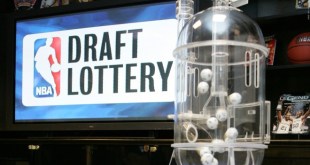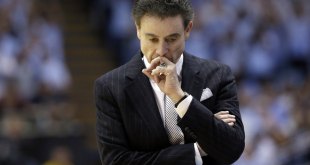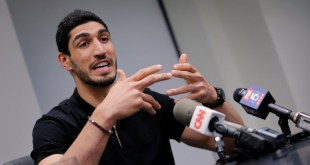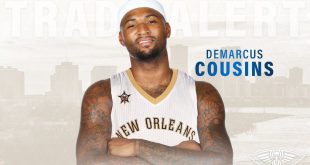The NBA’s board of governors voted 28-1-1 to pass legislation on draft lottery reform, with Oklahoma City voting against the reform and Dallas abstaining. While Silver himself admitted that the reform is “far from perfect,” the NBA hopes the new rules will limit teams’ attempts to tank in an effort to get higher picks.
Under the new lottery rules, the three teams with the worst regular season records will each have a 14% chance of getting the No. 1 overall pick. Previously, the worst team had a 25% chance at the top pick, with the second- and third-worst teams having 19.9% and 15.6% chances, respectively. Additionally, instead of three teams being part of the lottery draw, now it will be four teams. This means the top four picks will be selected by the lottery. After those, the remaining teams will be awarded picks in order of their regular season records, with the worse records getting the higher picks. Under this new system, the worst team cannot drop further than the fifth overall pick.
Why the Change Works
While limited, the new lottery rules should provide fewer incentives for teams to tank to the bottom of the league. With the three worst teams having equal chances at the top pick, there is no longer any particular need for a team to try to be the worst team in basketball to guarantee itself the best chance at the No. 1 overall selection. Moreover, by expanding the number of picks selected by lottery, the league provides more opportunity for a better team to get a top pick. In other words, the NBA is sending the message that you can try for the playoffs and still have a better shot at a top-four pick if you miss out. This also allows more variance to the worst teams’ draft positions. For example, a team that tanks and finishes with the third worst record in the league could now conceivably wind up with the seventh overall pick, well out of the range where elite NBA talent is usually selected.
Why the Change Fails
The limited nature of the reform does nothing to actually discourage tanking. It merely slightly changes the calculus teams will use when deciding whether and how to tank. Though teams no longer need to try to be the worst in the NBA to guarantee the best odds, they still need to be bottom three. In essence, the bottom three teams are still rewarded for tanking. Because the chance to get a historically great player at the top of the draft can have such a future-altering impact on a franchise, teams will still want to maximize their odds to get the best pick they can. In one sense, this almost makes it easier for teams to tank – they now only need to be really bad, but they don’t have to ensure they are the absolute worst to get the best odds. Moreover, the addition of a single pick added to the lottery draw is likely not enough incentive for a team to try harder on the off chance that it could wind up with a top pick. Bad teams that act rationally will still try to maximize their chances by getting the highest odds.
The Real Fix
The equal weighting system nearly eliminates tanking completely. Teams could still tank from the eighth seed to a lottery pick, but with equal chances at top picks, the marginal benefit is significantly diluted.
There would no longer be any incentive to bottom out if finishing one game out of the playoffs gives a team the exact same odds at the top pick as finishing 30 games out. This creates a much better fan experience. First, with no reason to maximize losing, teams will be incentivized to at least be competitive, giving themselves better chances to win games and making attending and watching games more enjoyable. Second, with no benefit to finishing worse in the standings, fans will no longer need to root for non-contending teams to lose, hoping for a better draft position. And the problems with equal weighting (e.g. good teams lucking into top picks and bad teams continually missing out) can be ameliorated with a few limited tweaks.
The NBA may never wind up implementing such a system. The current reform is a compromise that most teams were willing to go along with simply to send a message that the NBA nominally opposes tanking, while refusing to actually end it. Small market, mismanaged, or otherwise bad teams do not want to relinquish their ability to improve their chances in the draft while large markets and well-managed teams already have a clear advantage in attracting free agents. So for now, the NBA is content with gestures and not serious attempts to improve competitive balance. It’s possible teams will take this message to heart and voluntarily stop tanking. But don’t bet on it.
 The Sports Esquires Putting Sports on Trial
The Sports Esquires Putting Sports on Trial




